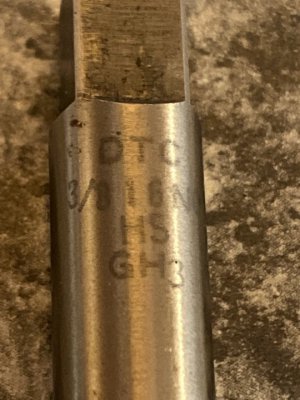- Joined
- Oct 13, 2014
- Messages
- 6,852
I have successfully used a ⅜-16 thread forming tap on ¼" thick 6061 Aluminum. I used lots of lubricant/coolant, the slowest speed on my mill (60 RPM) and a lot of feed pressure. They supposedly make stronger threads, used a lot in aviation.



